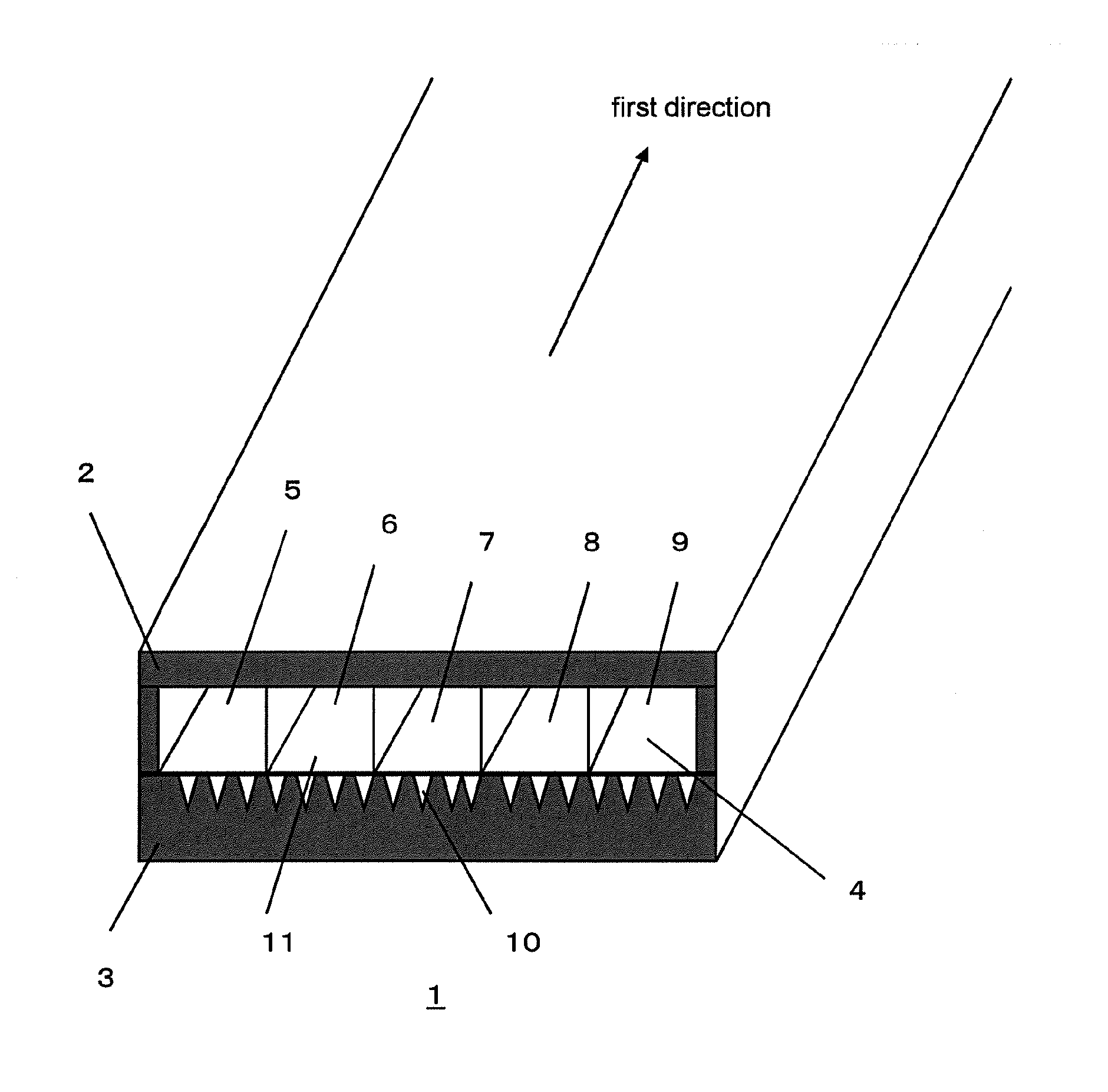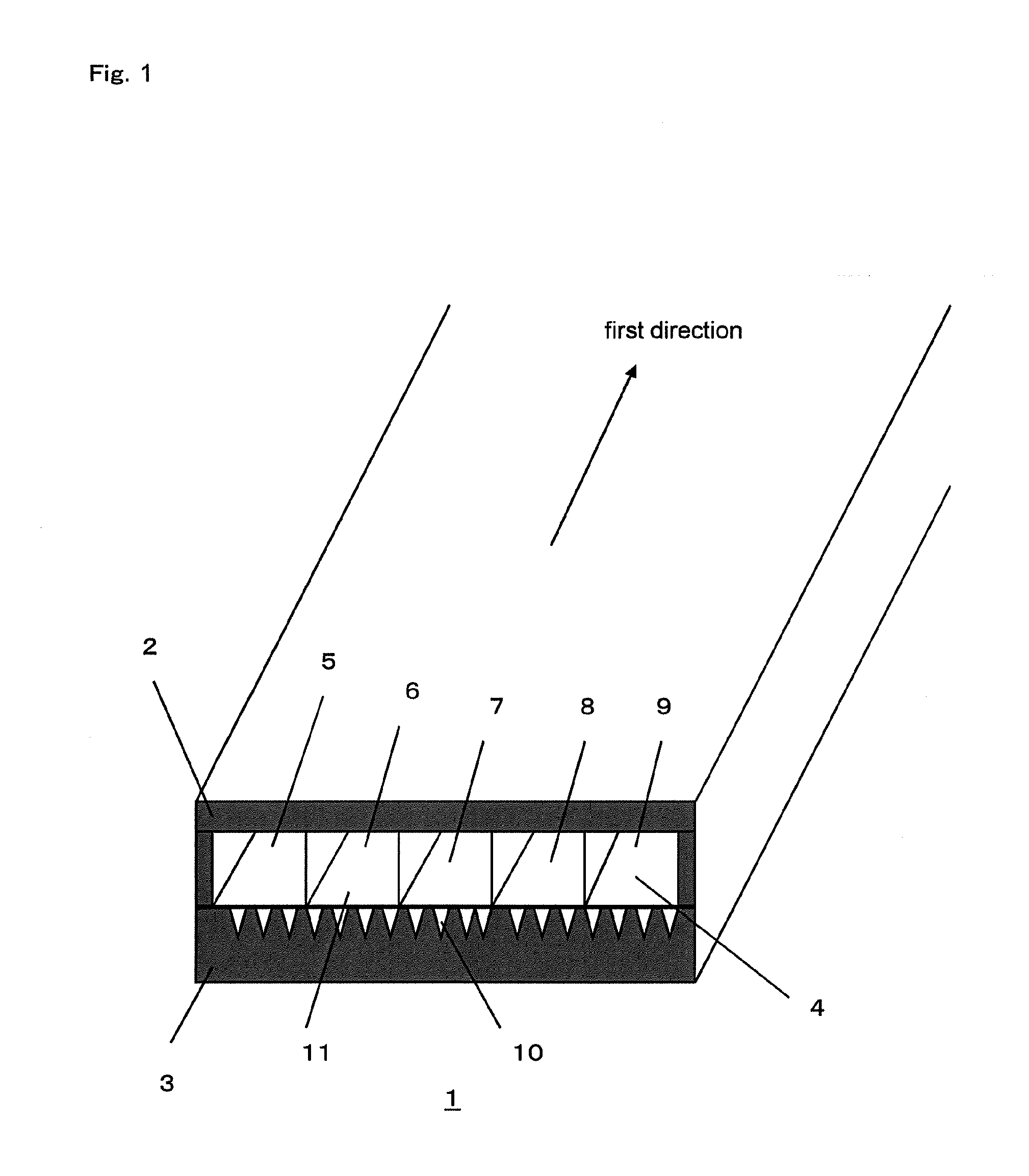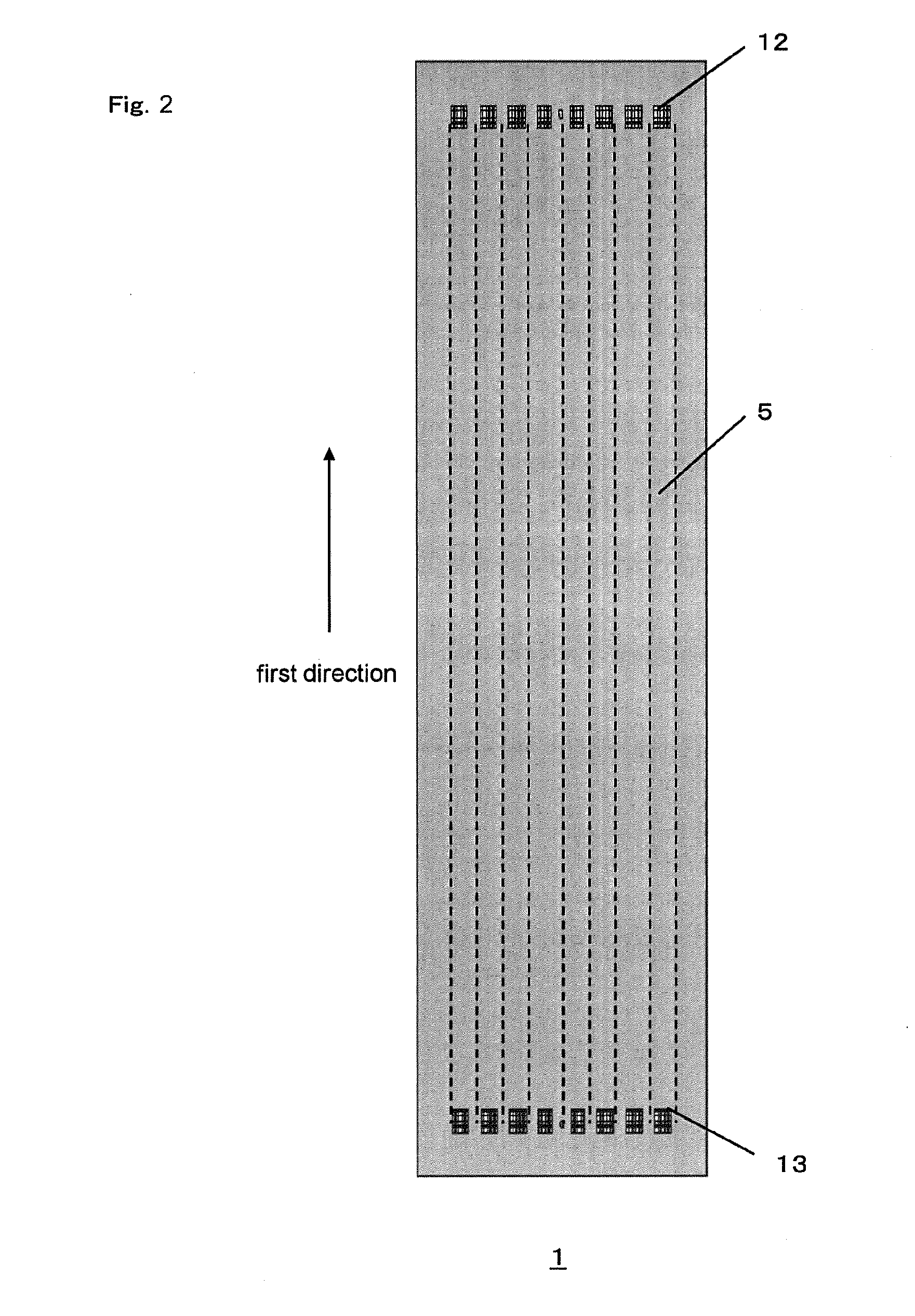Heat transporting unit and electronic device
a technology of heat transporting unit and electronic device, which is applied in the direction of indirect heat exchangers, lighting and heating apparatuses, laminated elements, etc., can solve the problems of inability to ensure the optimal operation of the device, the size of such a compact electronic part is small, and the performance degradation of the device or the industrial apparatus can not be guaranteed, so as to achieve the effect of improving the heat transporting efficiency and high efficiency
- Summary
- Abstract
- Description
- Claims
- Application Information
AI Technical Summary
Benefits of technology
Problems solved by technology
Method used
Image
Examples
Embodiment Construction
[0037]While the Present Application may be susceptible to embodiment in different forms, there is shown in the Figures, and will be described herein in detail, specific embodiments, with the understanding that the disclosure is to be considered an exemplification of the principles of the Present Application, and is not intended to limit the Present Application to that as illustrated.
[0038]In the illustrated embodiments, directional representations—i.e., up, down, left, right, front, rear and the like, used for explaining the structure and movement of the various elements of the Present Application, are relative. These representations are appropriate when the elements are in the position shown in the Figures. If the description of the position of the elements changes, however, it is assumed that these representations are to be changed accordingly.
[0039]In addition, a “heat pipe” shall mean a member, a part, an apparatus or a device for refrigerating or cooling a heating element. Pref...
PUM
 Login to View More
Login to View More Abstract
Description
Claims
Application Information
 Login to View More
Login to View More - R&D
- Intellectual Property
- Life Sciences
- Materials
- Tech Scout
- Unparalleled Data Quality
- Higher Quality Content
- 60% Fewer Hallucinations
Browse by: Latest US Patents, China's latest patents, Technical Efficacy Thesaurus, Application Domain, Technology Topic, Popular Technical Reports.
© 2025 PatSnap. All rights reserved.Legal|Privacy policy|Modern Slavery Act Transparency Statement|Sitemap|About US| Contact US: help@patsnap.com



